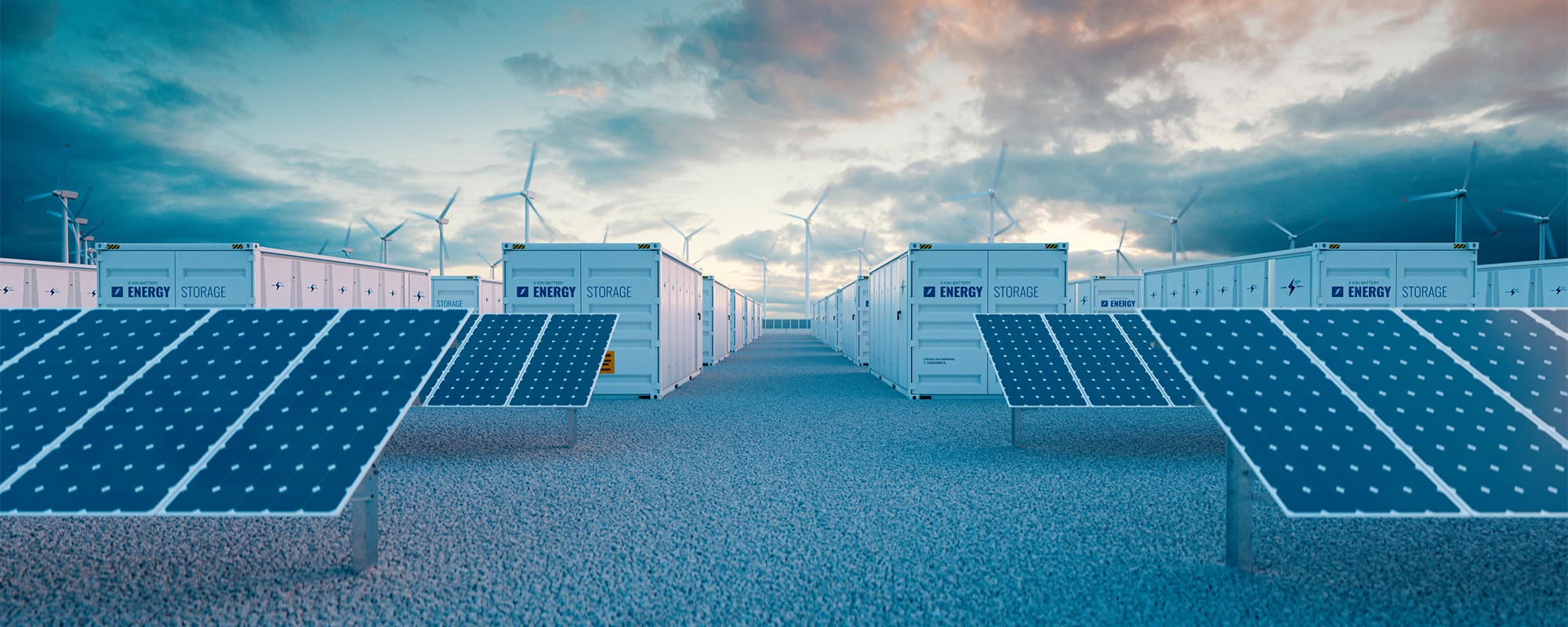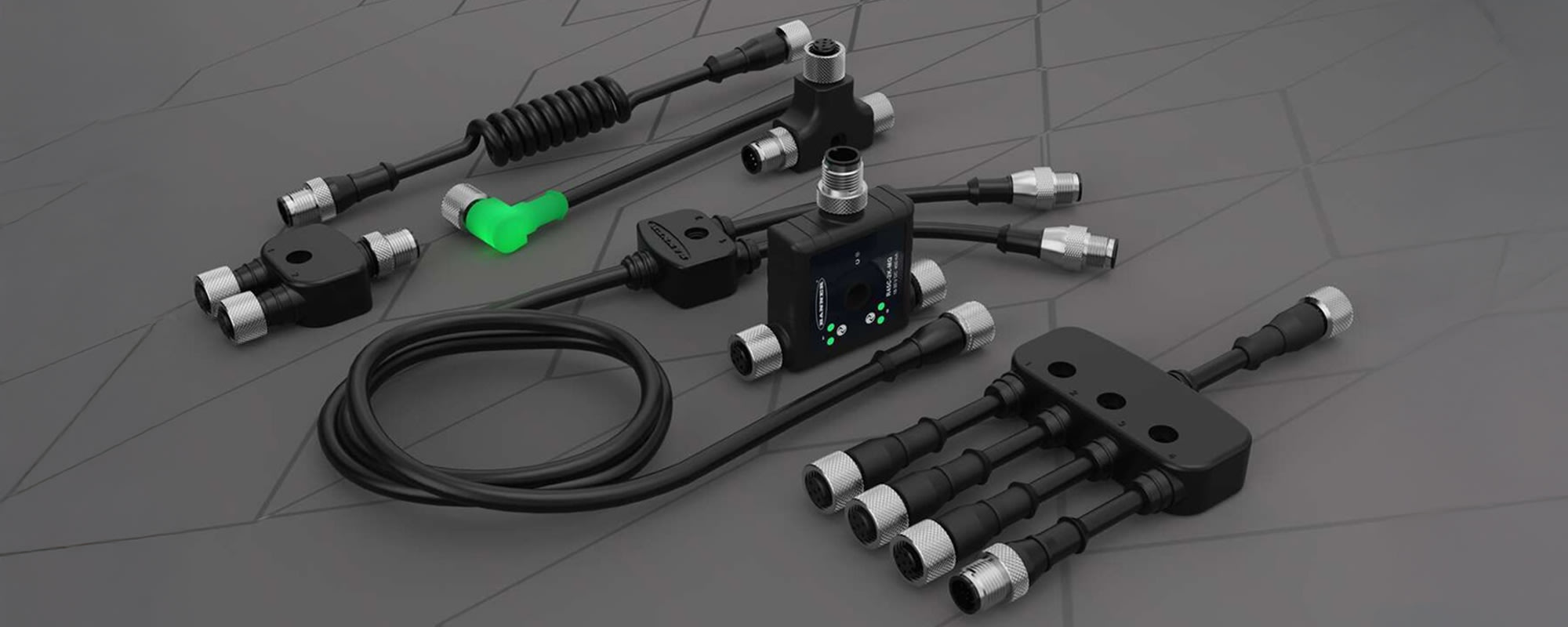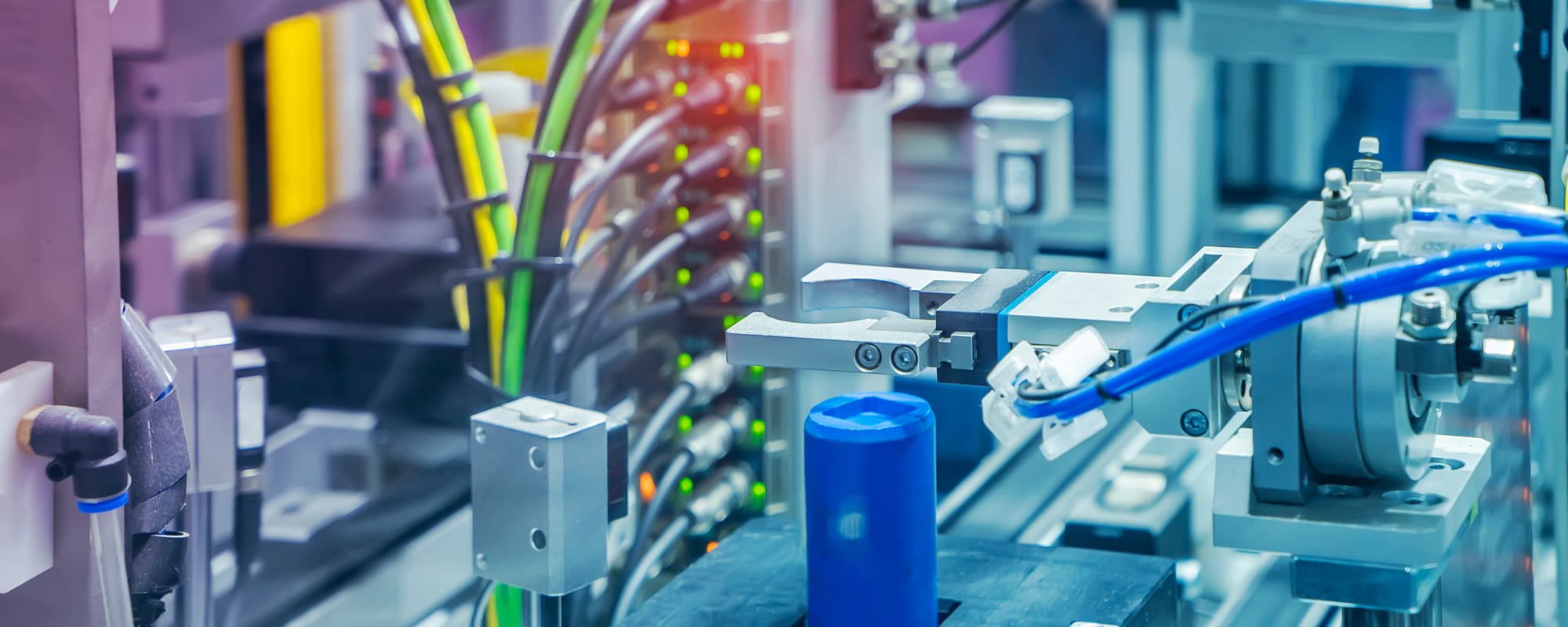2024 was a banner year for BESS, and current projections indicate that it won’t be the last. We spoke to two experts at TE Connectivity, a world leader in connectors and sensors, to learn more about the rapidly growing BESS market, including the value it offers and the EMI challenges that manufacturers face as these systems grow in size and complexity.


2024 was a banner year for battery energy storage systems (BESS). The global BESS market more than doubled, adding 205GWh of capacity for a year-over-year increase of 53%. It also achieved an estimated value of $7.8 billion, which is expected to grow to $25.6 billion by 2029. This growth is driven in large part by the sustainability megatrend and, in turn, the steadily increasing shift to renewable energy, as well as advances in battery technology and dynamic grid management and demand response capabilities.
We spoke to two experts at TE Connectivity, a world leader in connectors and sensors, to learn more about the rapidly growing BESS market: Holger Urban, the Head of Global Product Management and Regional Product Management (EMEA) – Filters for TE Connectivity’s Industrial Business Unit, and David Armitage, Manager of the Edison, New Jersey, R&D Filters Engineering Group, which is also part of TE Connectivity’s Industrial Business Unit.
Holger has more than 15 years of experience in the electronics industry and has held various roles in development and product management at technology-driven companies like Schaffner, WAGO, and TE Connectivity. His expertise includes managing electromagnetic compatibility (EMC) filters, power quality (PQ) filters, energy meters, power supplies, relay socket, and other components.
David has over 30 years of experience in EMC. He began his EMC career in a test house, evaluating customers’ products for compliance with global standards (such as IEC, EN, FCC, and MIL-STD) and helping customers troubleshoot and overcome any obstacles to regulatory compliance. At Schaffner and now TE Connectivity, David helps customers identify the ideal chokes, EMC filters, and power quality filters for their unique application demands, and when standard products don’t fully address interference challenges, he leads the development of specialized solutions tailored to satisfy specific application requirements.
Welcome, y’all. You joined us today to talk about battery energy storage systems (BESS) for smart grids. So, let’s dive in. What should people know?
Holger: Smart grids are changing the way we produce, store, and distribute energy. Instead of relying on a single centralized power plant, we now have energy coming from many decentralized sources — like homes with solar panels or small wind installations. This shift requires smarter infrastructure to manage energy flow, and that’s where BESS and smart grids come in.
Residential battery systems allow homeowners to store the renewable energy they generate, while larger commercial BESS integrated into smart grids can absorb excess energy and feed it back into the system when needed. This helps balance supply and demand and stabilize the grid.
Think of a village with 100 homes. If 50 of them generate their own solar power and send energy back to the grid at various times, that creates fluctuations. A smart grid monitors where and when energy is being produced and intelligently distributes it to the other 50 homes that aren’t generating power at that moment. It’s all about optimizing flow and keeping the grid stable.
As BESS applications grow in scale and complexity, what are some of the primary technical and operational challenges the industry is grappling with?
Holger: One of the biggest challenges lies in the mismatch between how energy is generated and how it’s distributed. Most of the grid infrastructure runs on alternating current (AC), while renewable energy sources — like solar panels and BESS — operate on direct current (DC). Inverters designed to convert DC to AC power bridge this gap.
These inverters rely on transistors to switch power between AC and DC, but this switching process generates electromagnetic interference (EMI). That interference can impact the performance of other grid-connected devices, causing issues like flickering lights, static, or signal disruptions. That’s why EMI and EMC filtering is so critical in modern energy systems. Every grid-connected device and storage system needs some level of filtering to ensure that it operates reliably within a shared infrastructure.
David: Power inverter operation generates noise, and this noise, which is present on both the AC and DC side of the inverter, can affect the unit itself, equipment connected to the same power source, and nearby electronics, preventing them from operating as intended. For BESS in particular, you also have to ensure that the battery is being correctly monitored by the system, as inverter noise can interfere with the communication and feedback for those batteries. It can cause incorrect charge and thermal readings, leading to overcharging or deep discharging and make your system think that the battery is too hot. It can also cause communication errors within the smart grid’s operation. In photovoltaic (PV) and EV charging applications, inverter noise can limit the lifecycle of your PV panels and charging system.
BESS and other renewable energy systems have to meet various government safety regulations, like FCC and IEC (Federal Communications Commission and International Electrotechnical Commission) standards that dictate how much noise is allowed back onto the power grid. This helps ensure that electronic equipment powered by the grid will operate safely, as intended. EMC filters help mitigate these disturbances by suppressing noise in the kilohertz and megahertz range. Filters designed for lower frequencies can also assist with power factor and harmonic issues.
Do you have any advice about selecting filters for BESS applications?
David: When you’re selecting EMC filters for a BESS, your first consideration is ensuring the proper voltage and current ratings, whether AC or DC. If you have a 600V system, you need an EMC filter rated for 600V or higher. If you have a 200A circuit, you need a filter rated for 200A or higher. You also want to make sure that your filters won’t get too hot. Filters deployed in cabinets and other enclosures are often subjected to temperatures as high as 40°C or 50°C. So, if a filter’s current rating is based on a lower ambient temperature, you will want to derate the filter current rating.
Leakage current concerns can also come into play on the AC side. Anytime you have capacitance connected to ground, you’re going to have some energy flowing through those capacitors, and that’s pretty common in EMC filters. So, several suppliers, including TE, offer filter options without any capacitors to ground to avoid introducing additional leakage current that could affect the unit’s operation or cause circuit breakers with ground fault protection to trip. Similarly, if you’re implementing an EMC filter on the DC side, there may be limitations to how much ripple current you can introduce into the system to avoid inverter operation issues. So, you have to be cognizant of how much capacitance you have allowing energy to flow to ground.
Ideally, you should also be aware of how much noise you’re dealing with and need to eliminate, because space is always a concern. You don’t want to oversize the filter, but you also want to ensure that the filter has enough “power” to mitigate or eliminate that noise without saturating. Saturation happens when the magnetic core reaches its maximum magnetic capacity and loses its inductance and filtering capability. It can also cause overheating and failure in sustained high-current conditions. So, you want to make sure that the filter you’re considering can handle the noise in the application you’re designing it into.
Holger: It’s worth emphasizing that filters alone don’t guarantee EMC compliance. A filter isn’t certified to meet FCC or IEC standards by itself; you must test the complete system. That’s the only way to know if a filter truly brings noise down to acceptable levels for your specific application.
Datasheets include insertion loss curves, which show how well the filter performs in ideal 50Ω test environments. But real-world grid conditions rarely match these setups. Grid impedance varies by location, and those variations can affect filter performance. So, while datasheets are a great starting point, actual in-system testing is the only way to validate that a filter works as expected.
In the end, most customers don’t just pick a filter off the shelf. They typically work with a technical expert — someone who understands the nuances and can run the right measurements and help identify the best filter for their specific requirements. That collaboration ensures better performance, safety, and compliance.
Please introduce us to TE Connectivity’s Schaffner EMC filters.
David: Now that the Schaffner and TE portfolios are combined, we have an extensive filter offering well suited for a wide variety of applications. We have three-phase and single-phase filters for the AC side of the inverter. One filter could be used to filter the entire inverter cabinet, or filters could be strategically placed within the inverter, lowering the overall emissions from the cabinet and allowing smaller filters to mitigate the overall noise from the enclosure.
We have filters specifically designed to be on the DC side, in between the PV cells of solar power array and the inverter or in between the batteries in a BESS and the inverter. These filters help remove noise from communication systems and improve reliability. Some EMC regulations also dictate how much noise can be on the DC power side.
Ideally, you want to attack EMI at the source. So, we also have an assortment of common-mode chokes that can be placed on the board or right in the inverter design itself to further mitigate noise before it has a chance to go anywhere else in the system, let alone back into the power grid. Our selection of chokes extends from a couple milliamps all the way up to 100A, but there are unique configurations we can employ to get even higher amperages if needed.
In terms of voltage, our EMC filters offer ratings spanning just a couple of volts to 1,500VDC. Many applications utilize a higher voltage, which allows for lower current with the same or greater power levels and smaller interconnecting wires that still satisfy today’s power-hungry units. For the AC side, we offer ratings up to 760VAC, allowing us to easily cover 600V applications.
All of our filters are conservatively designed and constructed to deliver high-quality performance and prevent failures, and the materials we use meet all isolation and insulation requirements. Sometimes, customers’ end products require additional testing and safety agency certifications. Our filters are designs and approved in such a way that agency certification and/or the evaluation of specific aspects associated with the filter design are already available. This prevents customers from having to invest additional time and money in testing and evaluation on their side. They can just take the files that come with our filters to prove that the filter meets the specific design requirements associated with final end-product approval.
Please talk a bit more about TE Connectivity’s Schaffner EMC filters for BESS applications.
Holger: BESS have some unique characteristics when it comes to filtering requirements — especially on the AC side. Because BESS typically use just one inverter and don’t require long cable runs, there’s naturally less noise to contend with. That means general-purpose AC filters, like our FN 3270 Series, are often a reliable and efficient choice.
The FN 3270 Series is one of our best-selling product families. These are single-stage AC EMC/RFI filters designed to support a wide variety of applications, including frequency inverters (like those used in BESS), DC/DC converters, power supplies, motor drives, and even lower-power IT, medical, and telecom equipment.
These filters offer a great balance between size, performance, and ease of use. Their compact, lightweight housings are rated UL94 V-0 for flammability and are easy to integrate into almost any system using either automated or manual assembly tools. They offer solid attenuation performance and a strong price-performance ratio.

Key specs of the FN 3270 Series include:
- Rated for 480VAC and 10–1,000A at 50°C
- Frequency range from DC to 60Hz
- Operating temperature from -25°C to +100°C
- High attenuation performance according to EN 61800-3/A11
- 15 different model options to support varying power needs
For safety and compliance, models rated from 10–100A feature touch-safe terminal blocks that meet EN 60204-1 installation standards. Models from 150A and up can be equipped with transparent protective covers to prevent accidental contact with any of the five busbar conductors, which is ideal for manufacturers who design with EMC compliance in mind from the beginning.
David: There are a lot of influential factors to account for when implementing an EMC filter, for example: the operating characteristics of the system, how the system is wired, how the filter is grounded (with a wire, a ground braid, or, ideally, right to the chassis), and how the wiring is routed to and from the filter. All these factors and more affect filter performance. So, customers typically come to us to help guide them in their selection. Due to all these variables, it’s not uncommon for us to see a customer with a filter performance issue who already has the right filter for the job but just needs to adjust some other element, like the internal mounting of the filter or wiring. Reaching out to ask an expert helps customers like these from selecting an unnecessarily large and overpriced filter when another more accessible filter could have met all their needs.
So, while we do offer a wide range of high-quality, field-proven EMI filters for BESS, we also offer proven expertise to support their selection and deployment.
Is there anything else you’d like RS customers to know about TE Connectivity’s Schaffner filters for BESS applications?
Holger: In addition to high-frequency EMC filters, the Schaffner portfolio includes power quality filters designed to address low-frequency disturbances, typically from 50Hz to 3kHz. This range covers harmonics and grid-related noise that can negatively impact equipment performance — especially in applications with motor drives, inverters, or long cable runs, which are common in industrial systems and BESS installations. For example, in a BESS with a long connection between the inverter and the motor, a power quality filter can reduce cable heating, improve efficiency, and extend equipment lifespan.
These filters are built to handle much higher energy levels than typical EMC filters. So, they’re larger in size and designed to mitigate conducted emissions rather than radiated ones, which is a characteristic that applies to our full filter lineup. All our filters are inserted inline, with cables or terminals for input and output, making them focused on controlling interference that travels through power lines.
Schaffner’s EMC portfolio covers a broad frequency range, from DC (0Hz) to 30MHz, and is widely used with inverters, power supplies, motor drives, and renewable energy systems. These filters help maintain a clean power signal by suppressing both low-frequency harmonics and high-frequency switching noise, ensuring smooth AC waveforms and stable DC lines free from ripple currents or transient disturbances caused by fast-switching transistors.
In addition to our well-known AC filters, DC filters, and common-mode chokes, we also offer:
- Three-phase and single-phase EMC filters with a wide range of voltage and current ratings
- IEC inlet filters for compact equipment and modular designs
- Power quality filters for harmonic mitigation and improved power factor in line with standards like IEEE 519 and EN 61000-3-12
This comprehensive range ensures that engineers and system integrators can find the right solution to meet EMC and power quality requirements in complex, high-performance applications like BESS.
Optimize your EMC with TE Connectivity’s Schaffner solutions, available at RS
TE Connectivity is a global leader in the design and manufacturing of electrical and electronic components for a wide array of industries and applications. Schaffner, which is now part of TE Connectivity, is a global leader in electromagnetic solutions engineered to ensure the efficient and reliable operation of electronic systems. Together, they play a vital role in driving technological transformation and enabling a sustainable, electrified global society.
RS offers an extensive selection of TE Connectivity products, including its Schaffner line of advanced electromagnetic components. To learn more about these products, visit the links embedded here and check out TE Connectivity’s other contributions to the RS Expert Advice Series.
For assistance identifying, procuring, and deploying, and maintaining TE Connectivity’s Schaffner brand electromagnetic solutions optimized for your applications — BESS or otherwise — please contact your local RS representative at 1.866.433.5722 or reach out to the RS technical support team.







